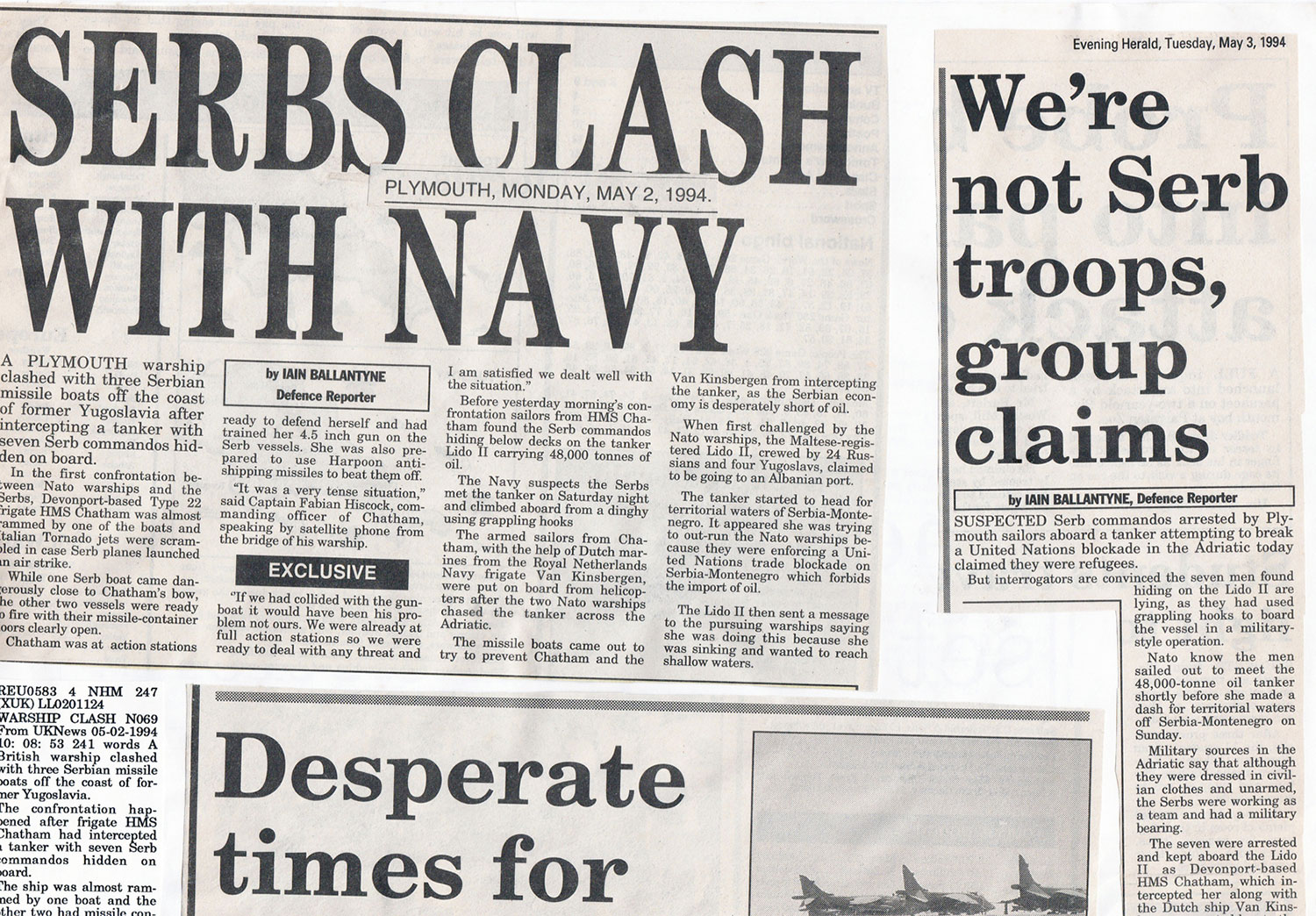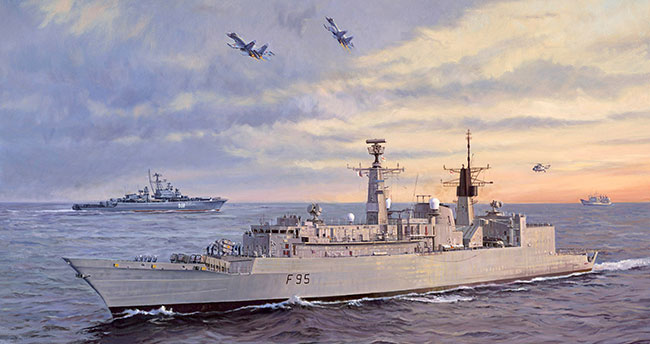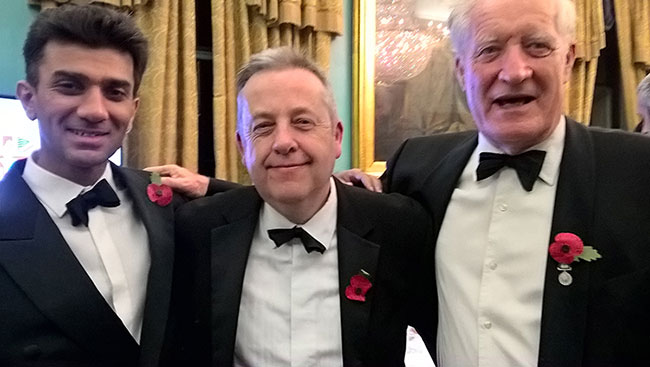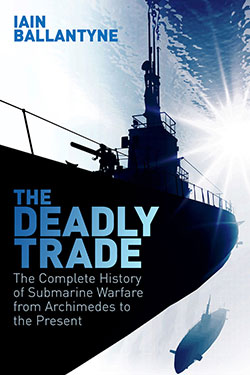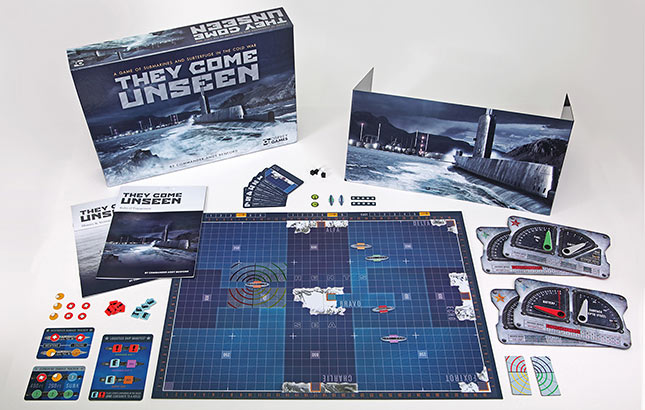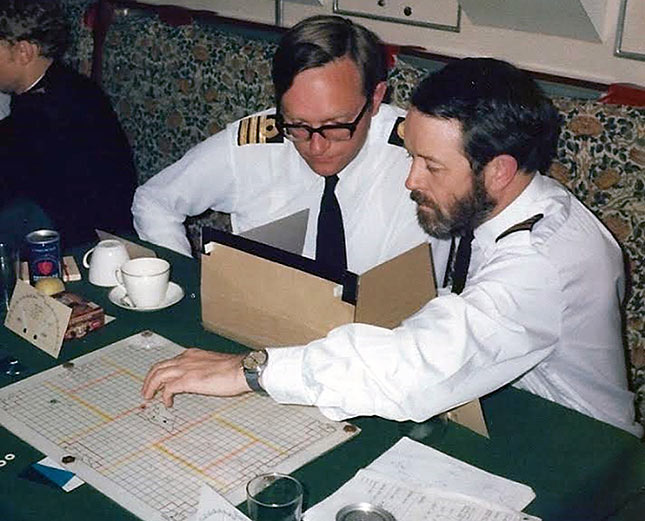In pursuit of ‘The Deadly Trade’ across the ages
It has been almost four years in the making but it’s not long now until ‘THE DEADLY TRADE: The Complete History of Submarine Warfare from Archimedes to the Present’ hits the water, with a publication date of 8 March.
In ‘THE DEADLY TRADE’ readers encounter the heroes and villains of submarine warfare across the ages, plunging into the story of not only how the technology has evolved but also high stakes, kill-or-be-killed struggles under the waves.
Among the submarine warfare legends we encounter are Max Horton, Martin Nasmith and Georg von Trapp (in WW1), Otto Kretschmer, Gunther Prien, Malcolm Wanklyn, Alastair Mars, Dudley Morton and Sam Dealey (in WW2).

A Japanese destroyer sinks during WW2, seen via the periscope of USS Nautilus. Photo: US NHHC.
Aside from telling the stories of the undersea warriors, the book also covers the mad, bad and dangerous schemes of inventors in earlier eras as they sought to give one side or other the edge in combat via their primitive vessels. More often than not the early attempts at undersea vessels killed their own crews (rather than harming the enemy).
Those who went up against the U-boats in WW2’s Battle of the Atlantic are also part of the action, not least ‘Johnny’ Walker, Donald Macintyre and Peter Gretton. The part played by code-breaking during WW2 is told, along with the intelligence-gathering efforts of both sides in the subsequent NATO versus Warsaw Pact confrontation.
‘THE DEADLY TRADE’ offers an epic voyage from Ancient times through the invention, development and lethal application of undersea warships, from Archimedes leaping out of his bath, down through the first attempt by Germany to win a war via U-boats, to WW2’s bitter convoys battles and the US Navy campaign to bring Japan to its knees.
The story continues with dangerous Cold War shadow boxing below the waves in the North Atlantic and Arctic (1940s – late 1980s), along with hot war submarine attacks in the Indian Ocean and South Atlantic (during the 1970s and 1980s respectively).
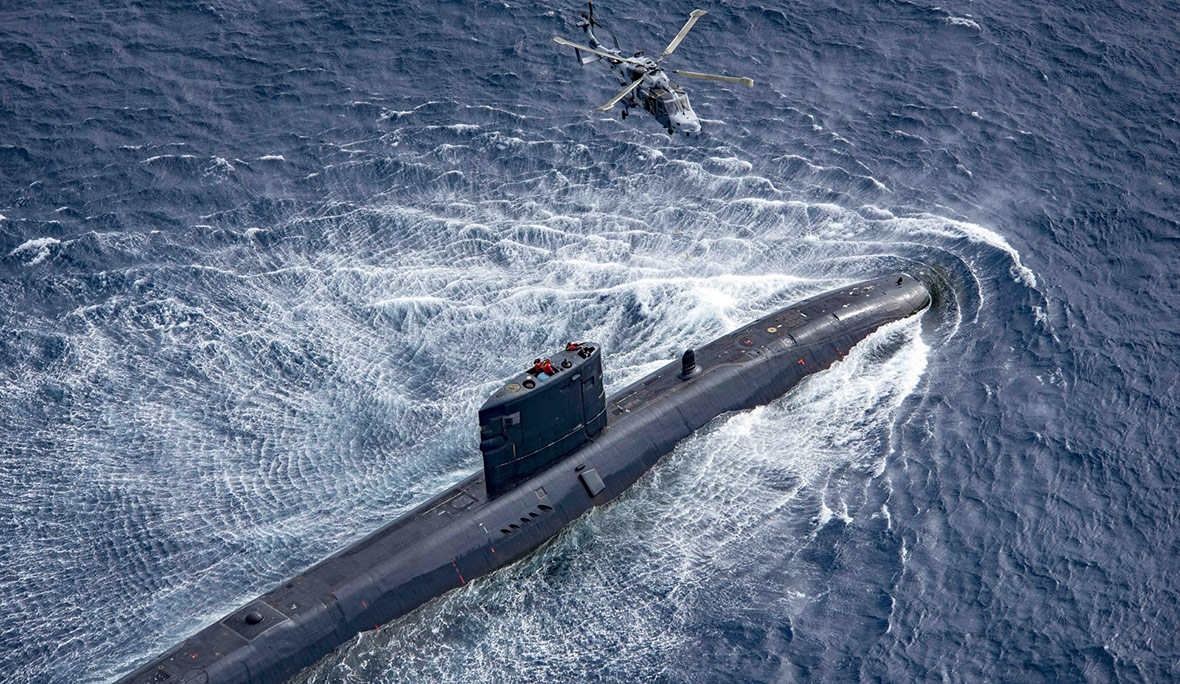
A British nuclear-powered attack submarine of today. Photo: USN.
It comes right up to date with North Korea’s covert sinking of a warship, Putin’s submarines launching cruise missiles into the cauldron of the Middle East and China seeking to create a bastion to protect its doomsday vessels.
Hidden and largely ignored by the general public, it is clear that submarines and submariners still pursue The Deadly Trade of hunting other vessels and deterring nuclear attack by standing ready to unleash Armageddon. It is something we should ponder deeply while the global effect of submarine warfare for more than a century is demonstrated across the vast span of the book’s narrative.
‘THE DEADLY TRADE’ considers how the world’s fate has since the 1950s been in the hands of young submariners burdened with terrible destructive power. They are out there right now in their boats patrolling the world’s oceans.
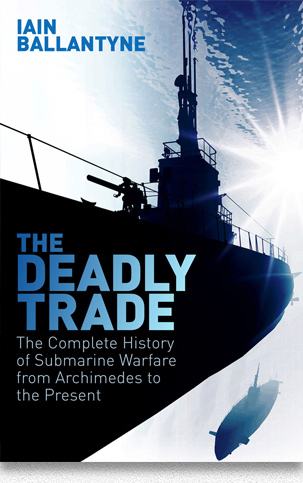 ‘THE DEADLY TRADE: The Complete History of Submarine Warfare from Archimedes to the Present’ is published by Weidenfeld & Nicolson on (752 pages, hardback £25.00/eBook £12.99).
‘THE DEADLY TRADE: The Complete History of Submarine Warfare from Archimedes to the Present’ is published by Weidenfeld & Nicolson on (752 pages, hardback £25.00/eBook £12.99).
Available through Amazon and Waterstones and other book retailers.
